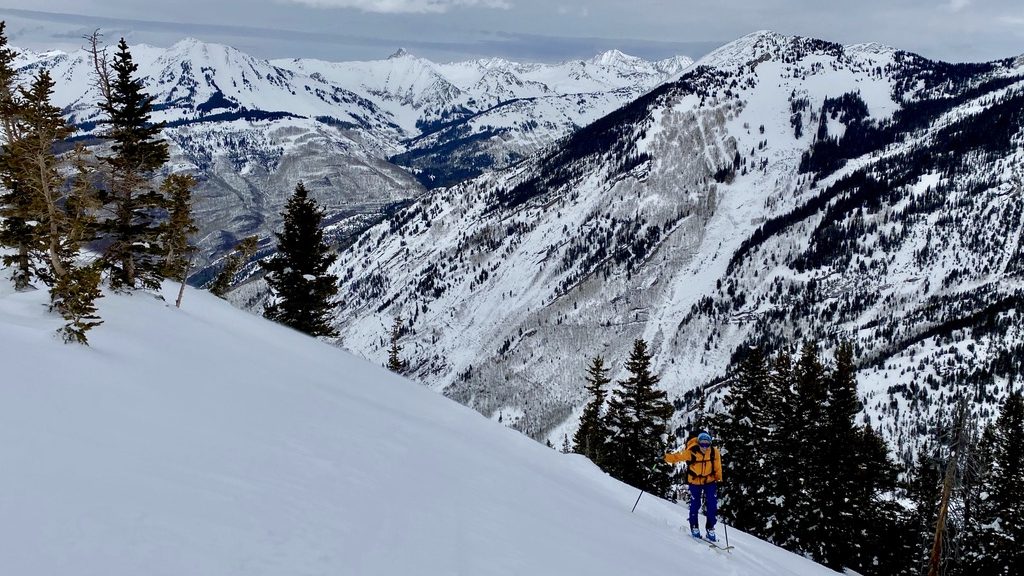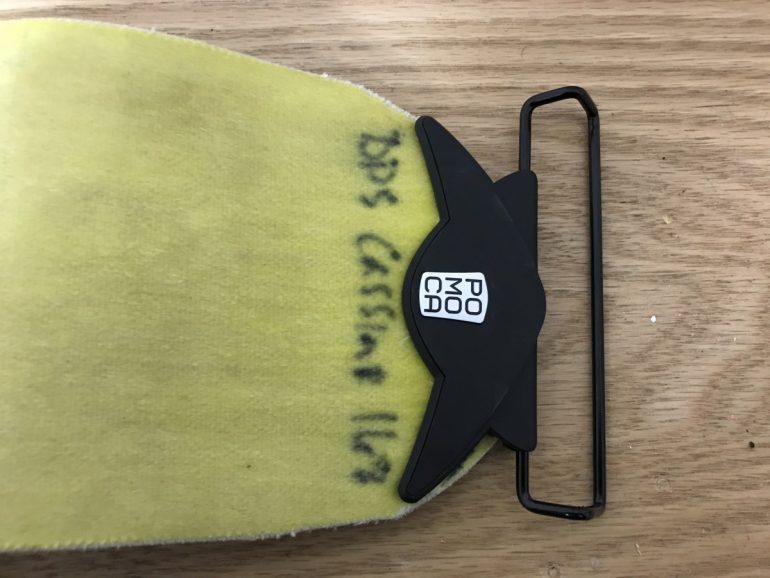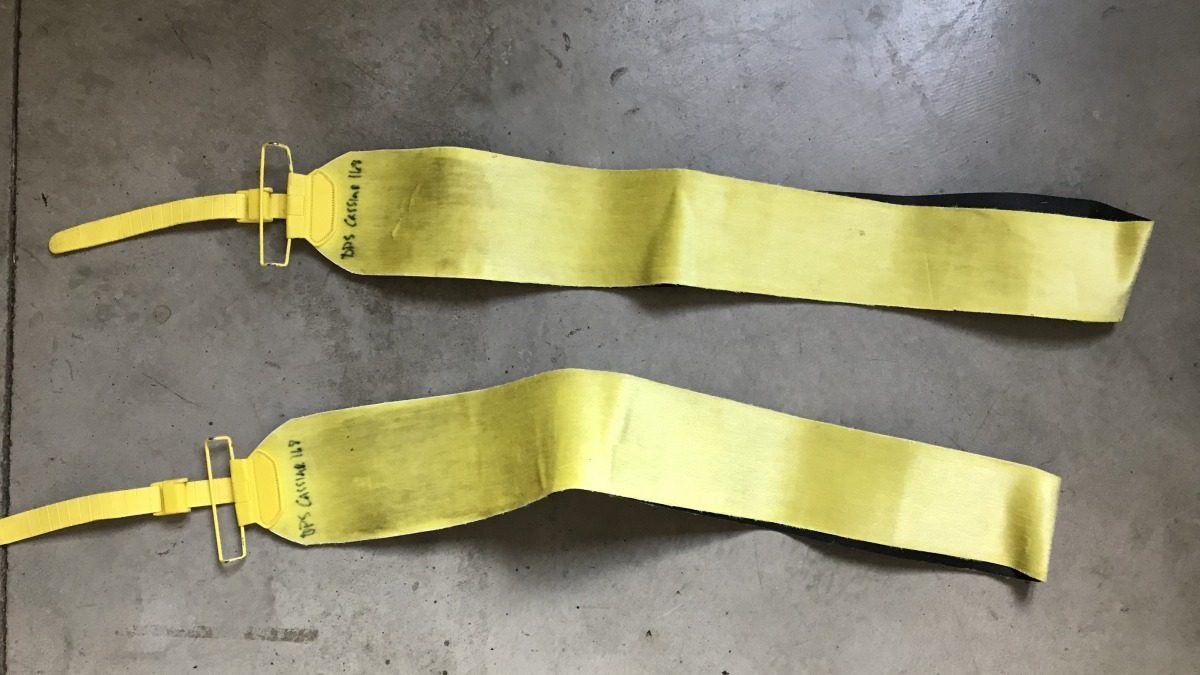Update 1/18/21: Well folks, all I had to do was write an article that highlighted no durability issues. Not two weeks after press time, the plastic on my Pomoca Climb 2.0 skins broke.
Fortunately, it was an easy fix with a replacement tip, available from Pomoca for $24.95 (pack of 2). Cheaper than a new pair of skins. I’ve also heard of others retrofitting these tips with a Black Diamond wire tip, plastic free.
Here are a few photos of my fix. If you’re going to go this route, do yourself a favor and add a hole punch to your tool box.
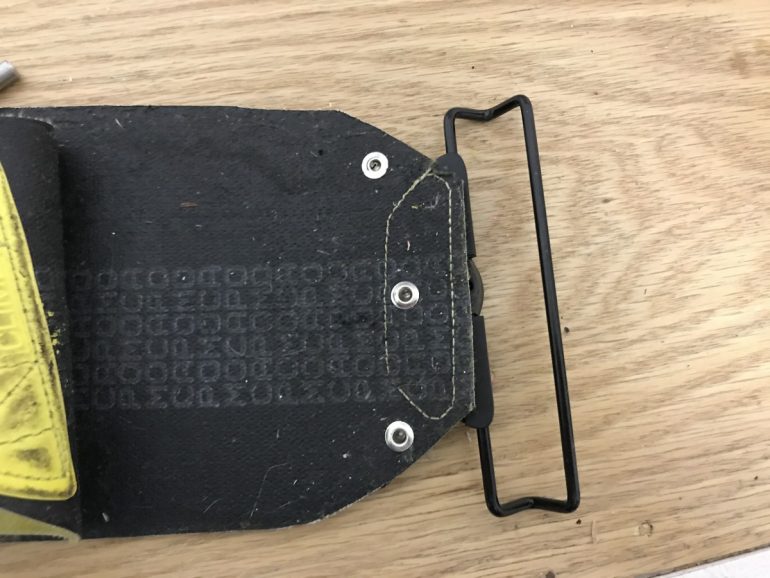
The replacement kit comes with a manual hole punch, but your life will be easier to get one that doesn’t require a hammer.
Like many beginner backcountry skiers, I spent the first several years of my ski touring life thinking that climbing skins came only in two colors: orange or purple. Back then, they mostly did.
So when it was finally time to upgrade my bulky, seemingly indestructible (but notably no longer sticky) introductory set of nylon skins, I was surprised by the sheer number of color choices — pink, yellow, blue, patterned, as well as the fabrics — mohair, nylon, mohair-nylon blend. And let’s not mention some of the price tags.
I settled on a relatively wallet friendly, yellow middle ground: the Pomoca Climb 2.0. Heading into their third season, these ‘golden slippers’ (pardon the pun. Or not) have proven themselves exceptionally well in a variety of climates and conditions. Here’s my take.
The skins
Amidst Pomoca’s rainbow spectrum of climbing skins, the Climb 2.0s are situated in the more durable, slightly heavier, slightly cheaper end. This doesn’t mean they are necessarily heavy or cheap; in my experience a Pomoca ‘budget’ skin is still exceptional quality and these skins clock in at 215g per skin for size medium (100mm/170cm).
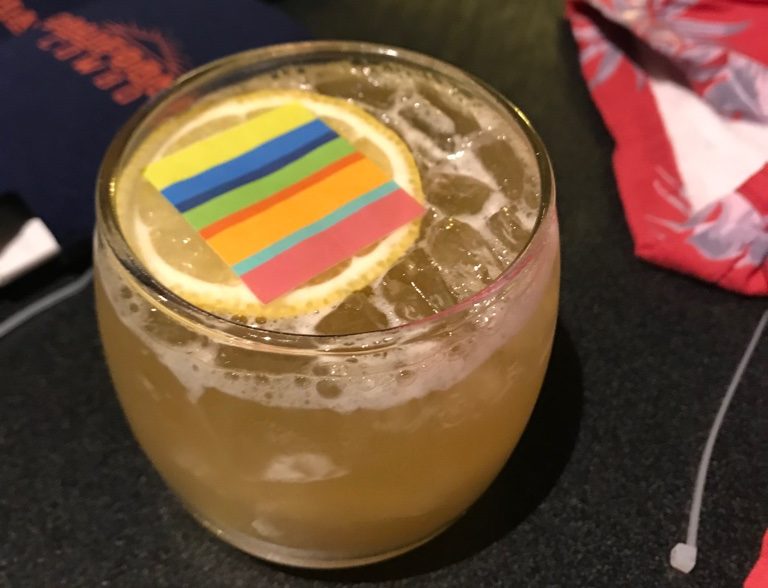
A Pomoca themed cocktail from a press event back in the day when press events were a thing. Now the question is what glide treatments and material combos Pomoca will come up with for the other colors of the rainbow.
The Climb 2.0s are a 30/70 nylon mohair blend coated with Pomoca’s signature glide treatment and backed by the company’s proprietary (and very effective) glue. A primary secret to Pomoca’s skin success is the Safer Skin Light membrane, an uber thin rubber layer between the plush and the sticky side that prevents water logging, cuts weight, and allows the skin to pack down for easy carrying.
They are available to buy either off a role, or ‘Ready2Climb’ in varying widths and lenghts with pre-sewn tips and tails. Pomoca claims that ‘Ready2Climb’ skins require a mere two minutes to cut. On this I can concur, both having cut my own and occasionally working in a ski shop where I’ve cut dozens for other people. And the cutting tool they provide is by far my favorite for other skins.
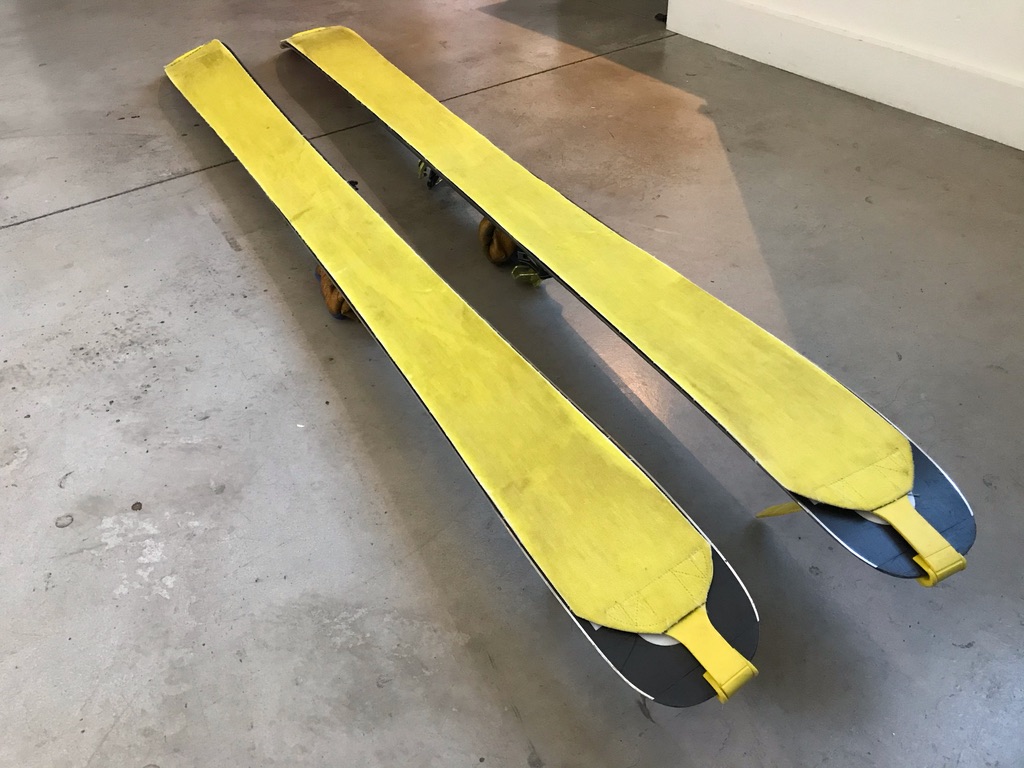
Like many of Pomocas skins, the Climb 2.0 come in pre-cut lengths and widths with pre-sewn tip and tail attachments.
Pomoca is a Swiss brand that prides itself in its family roots. They’ve been making climbing skins since 1939 but only really started to take off in the U.S. over the past decade. They’re now housed under the roof of Selawa, the same company that owns Dynafit. Perhaps that’s why the two companies’ colors seem to work so well together.
Every skin they manufacture has at least 70% mohair, sourced from Angora goats in South Africa. Last year they launched a skin-tracking initiative that allows you to type in the serial number of your new skins (manufactured in 2020 onward) and see what goat farm the magic hairs come from. The goats are pretty cute, too.
Testing environment
I’ve used the skins for two full seasons, averaging 50 tours per. They’ve been used primarily in Colorado’s dry continental snow, with some Pacific Northwest volcano skiing, in conditions ranging from cold, deep winter pow to mushy spring refreeze and everything in between. I found them well matched for my DPS Tour 1 Cassiar 95 skis.
Glide
Thanks to those smooth goat hairs, the skins glide well. From long flat-ish Grand Traverse training slogs to mid-winter backcountry bowl climbs in the West Elks, they’ve slid smoothly on a variety of snow conditions with minimal effort. Where I most notice glide resistance is on long, flat egresses where the choice between skating, skinning and scooting essentially produce the same slow results (blame it on my skate technique). In these instances, pure mohair would be faster, as would an upgrade to the S-Glide (teal) skin that has a more aggressive glide treatment but both are more expensive. And the Climb 2.0 glide is eons smoother and more efficient than 100% nylon.
Pomoca uses a hydrophobic coating on the hairs that also help them to resist icing and clumping, helpful for multiple laps and spring conditions. After 15 or so spring temperature outings, I had to crayon on wax to avoid clumping issues. I have also noticed snow creep around the tips, which I hear Pomoca has remedied with the new design in their Free Pro skins (review to come later this season).
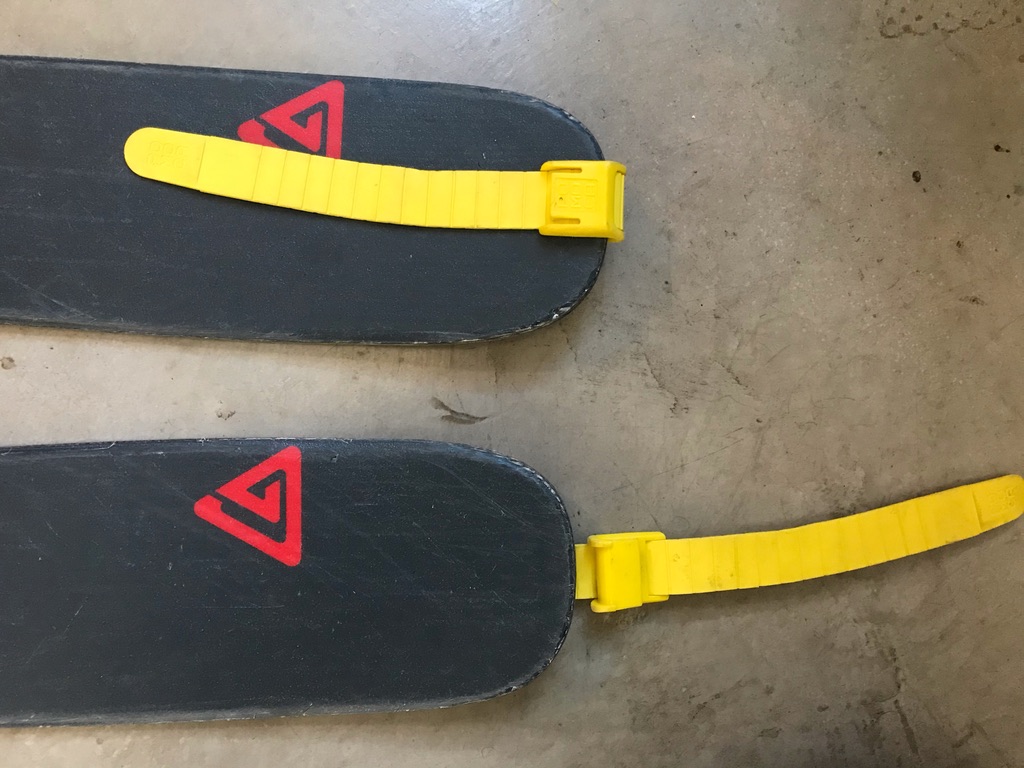
Adjustable tail clips are easy to secure, flick off, and adjust. Replacement clips come in the box. It’s also worth noting as of 2021 Pomoca offers upgraded clips for more durability.
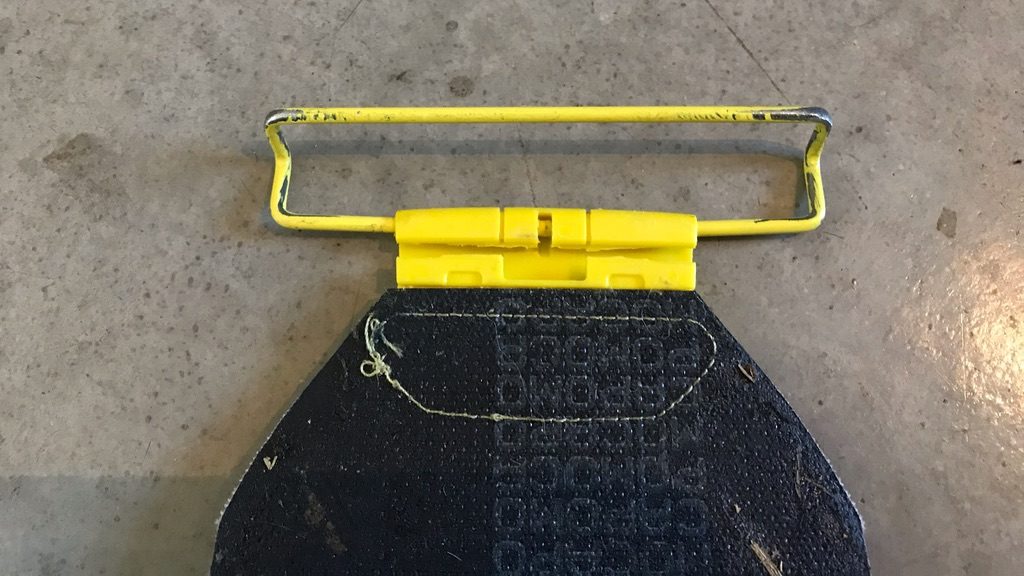
Pre-cut skins come with a pair of wide and narrow wire tip attachments. You can also switch out for the rubber Dynafit Speedskin attachment.
Grip
There is a reason the 70/30 mohair/nylon blend has become industry standard. It strikes the ideal blend between grip and glide, heft and lightness. True to form, the Climb 2.0s perform as intended in most conditions. On all but super icy or steep skin tracks, they hold to the slope and make for efficient travel.
Stick
The skins have mostly been used in Colorado’s relatively dry climes, and stick — whether too much or too little — has never been an issue. I always leave my skis on for transitions and the skins are consistently easy to rip off without feeling like I’m going to dislocate my shoulder or timber onto the snow.
While doing multiple laps, especially in cold temps, I have had icing issues on the glue. This is typical for most skins and I can usually remedy it by warming them up in my jacket while skiing. It’s never (knock on wood) been a day-ender.
Durability
After some 100 tours, the plush does not show visible wear except for the edges where its become a little fuzzy and frayed. The glue is slightly less sticky then out of the box but still hangs on for long tours and rips off the ski without leaving residue. It’s worth noting that I have mostly taken good care of the skins, keeping them dry, cool and shaded when they’re not in use. I hang dry them folded for only a short time, away from direct heat when needed. They’ve accumulated the requisite pine stray pine needle, dirt clump and dog hair but not enough to impede performance.
Bottom line
As manufacturers keep pumping out skins in more colors and fabrics, that tout more kinds of treatments and glues, Pomoca Climb 2.0 offers a steadfast reliability that’s worth its starting price tag of $170. It’s not the least expensive skin out there, but the performance, quality of materials, relative longevity and reliability make it worth that cost. I’ve got to say, the yellow has grown on me too.
Read our other Pomoca coverage
Manasseh Franklin is a writer, editor and big fan of walking uphill. She has an MFA in creative nonfiction and environment and natural resources from the University of Wyoming and especially enjoys writing about glaciers. Find her other work in Alpinist, Adventure Journal, Rock and Ice, Aspen Sojourner, AFAR, Trail Runner and Western Confluence.

